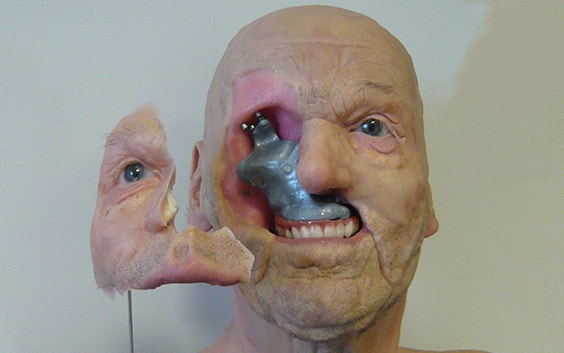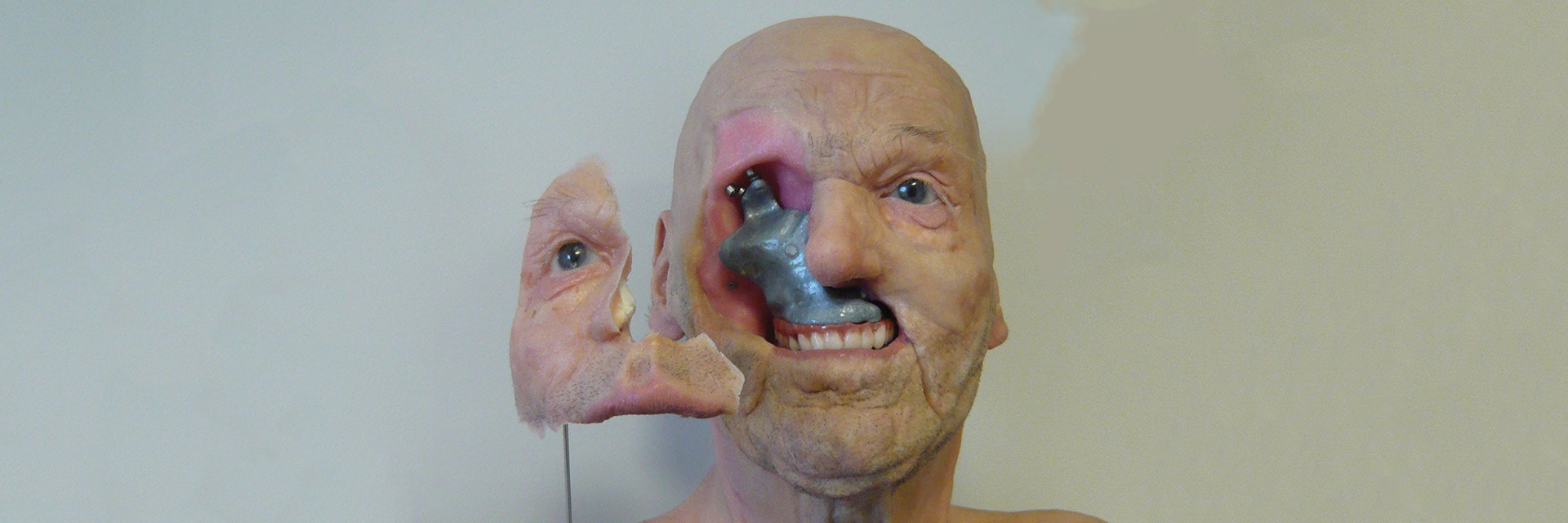CASE STUDY
Anaplastology Model, Presented by Jan De Cubber, CCE Zaventem, Belgium

For the patient in this case, recurring bouts of cancer led doctors to remove an area of his face that included his right eye, cheekbone, and upper jaw. This left the patient with a severe deformity that had serious consequences for his quality of life and one so rare that conventional treatment for it did not exist. Fortunately, he was able to count on the team treating him, which included the talented Belgian Anaplastologist Jan De Cubber, to come up with a solution that would change his life. In turn, the team was able to count on clinical engineers at Materialise and their state-of-the-art solutions to help realize their plan and achieve truly stunning results.
Finding the best solution for a complex problem
As there was a chance that the cancer could return, many treatment options that would be considered if the damage was caused by trauma, such as a face transplant, were out of the question. The one option remaining was anaplastology, a procedure involving talented craftsmen who use silicon to recreate ears, noses, and eye sockets for people suffering birth defects, trauma, or cancer. Taking on this case was Jan De Cubber, an Anaplastologist with more than 25 years of experience, an international reputation as an expert in his field (affectionately known as the “grandfather“ of prosthetics), and five patents to his name.
Combining incredible skill with innovative technology
As you can see in the images above, this case was a little bit more complex than most: not only was the soft tissue missing, but the bone as well. Therefore, it was necessary for engineers at Materialise to reconstruct the missing bone by mirroring the healthy side of the patient’s face and digitally designing the replacement bone that would be 3D printed in titanium. The patient could easily put this supporting structure in place thanks to magnetic implants, positioned according to a surgical plan made in collaboration with the surgeon, Jan De Cubber, and an engineer at Materialise. Furthermore, dentures could be attached at the bottom of the structure to give the patient the ability to once again chew food.
Next, a mirror effect was once again used to create the patient’s missing soft tissue. Since 3D printing the entire structure would not achieve the highly realistic results required, it was instead used to help Jan De Cubber by making his work easier to prepare and complete. Clinical engineers offset the mirrored image by a fixed amount so that Jan De Cubber knew exactly how much silicone needed to be applied in order to create the prosthetic, taking time-consuming guesswork out of the process. Furthermore, the 3D-printed section of the prosthetic gave Jan De Cubber the support and shape needed to achieve the amazing results seen above.
Sharing the experience with others
In the end, the patient in this case was unable to receive the treatment planned for him because his cancer returned. However, the team involved in the planning decided to go ahead with the procedure and create a demo model* in order to show others the incredible results that can be achieved when talent, experience, and technology are combined so well.
*The appearance of the model was changed in order to protect the identity of the patient.
Share on:
This case study in a few words
Healthcare
3D-printed implant
Treat a complex case
